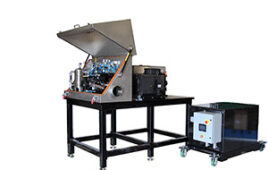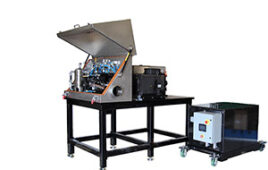With the recent announcement that the U.S. government will propose new fuel economy standards
this fall, a Univ.
of Michigan study shows
that automakers fine-tune vehicle fuel economy to qualify for more favorable
treatment.
For more than 30 years, auto companies have done just enough
to improve fuel economy of vehicles in order to lower tax rates and increase
rebates imposed by governments in the United States and Canada, according to
Joel Slemrod, professor of business economics at Michigan’s Ross School of
Business, and colleague James Sallee, assistant professor at the Univ. of
Chicago’s Harris School of Public Policy.
In response to federal policies to boost gas mileage,
manufacturers have changed vehicle weights, improved tire-rolling resistance
and added aerodynamic features to push fuel-economy rates past
government-mandated thresholds.
In their study, Slemrod and Sallee focus on ‘car notches’ in
policies intended to encourage the production and use of fuel-efficient
vehicles. Car notches are the small trigger points in the numerical values of
fuel economy (say, the difference between 22.5 mpg and 22.4 mpg) that lead to
large changes in tax liability or the amount of a subsidy.
“In spite of having a bad reputation among economists,
policy notches are ubiquitous,” Slemrod said. “They induce ‘actors’
to change their behavior just enough to be situated on the beneficial side of a
notch. In the case of car notches, a vehicle manufacturer may have an incentive
to marginally re-engineer its cars so as to just qualify for a more
advantageous policy category.”
Slemrod and Sallee studied the behavioral responses to the
U.S. Gas Guzzler Tax of 1978, which penalizes cars with low fuel economy, and
the Canadian “feebate” program of 2007, a set of taxes and rebates
that together act to encourage the purchase of more fuel-efficient vehicles.
They also addressed another notch-like aspect of fuel economy—publicly
disclosed and highly visible integer fuel economy ratings that provide
information to prospective car buyers.
Under the U.S. Gas Guzzler Tax, the amount of the tax is a
notched schedule in fuel economy, so vehicles with very small ratings
differences may be subject to discretely different taxes. For example, a car
with an 18.5 mpg rating is subject to a $2,100 tax, while a car with an 18.4
mpg rating is subject to a $2,600 tax, so that a tax increase of $500 is
triggered by a decrease of just 0.1 mpg. Under the Canadian feebate program,
cars that get 43 mpg, for example, qualify for a $2,000 rebate, while cars that
get 42 mpg receive a $1,500 rebate. Likewise, vehicles getting less than 18 mpg
are taxed up to $4,000.
Using data from Corporate Average Fuel Economy, the U.S.
Environmental Protection Agency, Internal Revenue Service and the Canadian government,
the researchers found that automakers produce and sell a significant number of
“extra” vehicles with fuel economy ratings just on the tax-favorable
side of a notch than otherwise would be expected—and more than those cars just
below a notch that are subject to a higher tax.
“We observe this behavior not only in response to
explicit notches in tax and subsidy policies, but also in response to implicit
‘presentation notches,’ where government policy dictates what information a
firm must provide to consumers,” Slemrod said.
Slemrod and Sallee say that since automakers are required to
round off mpg values on fuel economy labels for consumers, this results in a
presentation notch at every .5 mpg (permitting automakers to round up in their
calculation of fuel economy).
The researchers say that automakers can boost fuel economy by
producing lighter-weight vehicles of the same model to create a better fuel
economy rating or by simply modifying a vehicle to improve its fuel economy by
recalibrating the engine, using low-friction lubricants, modifying the tires or
making small aerodynamic changes. All of this behavior is perfectly legal, they
add.
“Automakers are reluctant to publicize information about
how local fuel economy adjustment might occur or say whether they respond to
notches,” Slemrod said. “However, our conversations with experts who
have worked for automakers and officials at the EPA indicate that this type of
vehicle modification does indeed take place.
“Overall, we provide several pieces of evidence showing
that automakers respond to notches in fuel economy policy by precisely
manipulating fuel-economy ratings so as to just qualify for more favorable
treatment. And future fuel economy policies are likely to increase the
importance of notches.”




